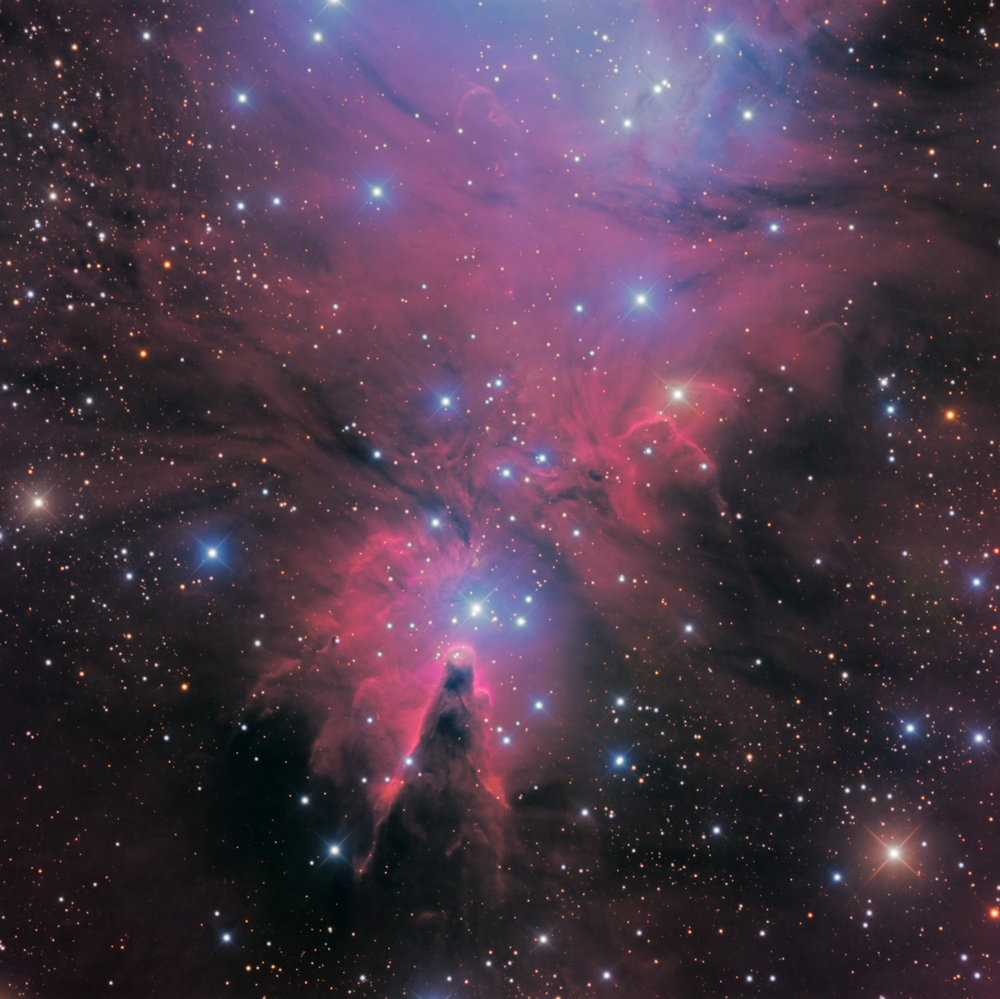
NGC2264: This is a large region of nebulosity, which includes a great deal of emission nebula (red), some reflection nebula (blue), dark nebula (much of the cone, as well as some other parts), and an open star cluster (the "Christmas Tree Cluster"). To put a scale on this, the Cone Nebula is estimated to be about 7 light years long; the entire width and height of this image is a bit less than a degree of arc, or about 45 light years across for objects 2500 light years away. This is part of an extensive star-forming region. Various parts of this image are at varying distances from us; it is estimated that the Cone Nebula is about 2500 light years away from us, and the bright star cluster) is about 2200 light years from us. NGC 2264 is the designation given to the entire region of this photo.
I last imaged this 16 years earlier, with a very fine, but small, refractor. I am pleased (relieved?) that this version shows considerably more detail than did that version; see my old version
here.
Copyright 2022, 2023 Mark de Regt